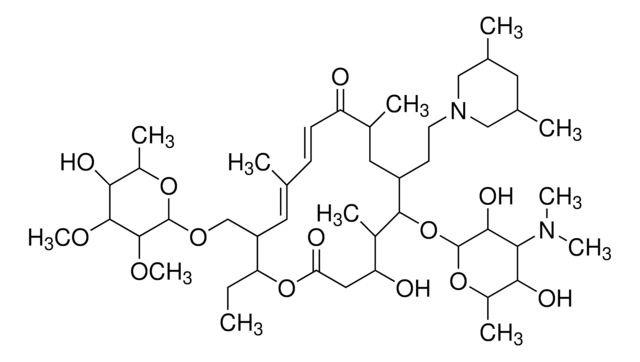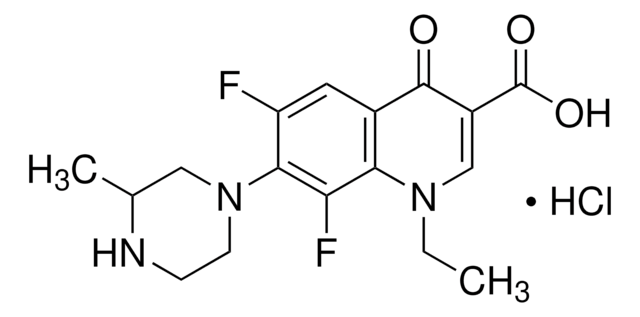67126
Oxolinic acid
analytical standard
Synonym(s):
5,8-Dihydro-5-ethyl-8-oxo-1,3-dioxolo[4,5-g]quinoline-7-carboxylic acid
About This Item
Recommended Products
grade
analytical standard
Quality Level
Assay
≥95.0% (HPLC)
shelf life
limited shelf life, expiry date on the label
technique(s)
HPLC: suitable
gas chromatography (GC): suitable
application(s)
clinical testing
format
neat
storage temp.
2-8°C
SMILES string
CCN1C=C(C(O)=O)C(=O)c2cc3OCOc3cc12
InChI
1S/C13H11NO5/c1-2-14-5-8(13(16)17)12(15)7-3-10-11(4-9(7)14)19-6-18-10/h3-5H,2,6H2,1H3,(H,16,17)
InChI key
KYGZCKSPAKDVKC-UHFFFAOYSA-N
Looking for similar products? Visit Product Comparison Guide
General description
Application
Packaging
Choose from one of the most recent versions:
Already Own This Product?
Find documentation for the products that you have recently purchased in the Document Library.
Customers Also Viewed
Our team of scientists has experience in all areas of research including Life Science, Material Science, Chemical Synthesis, Chromatography, Analytical and many others.
Contact Technical Service
















